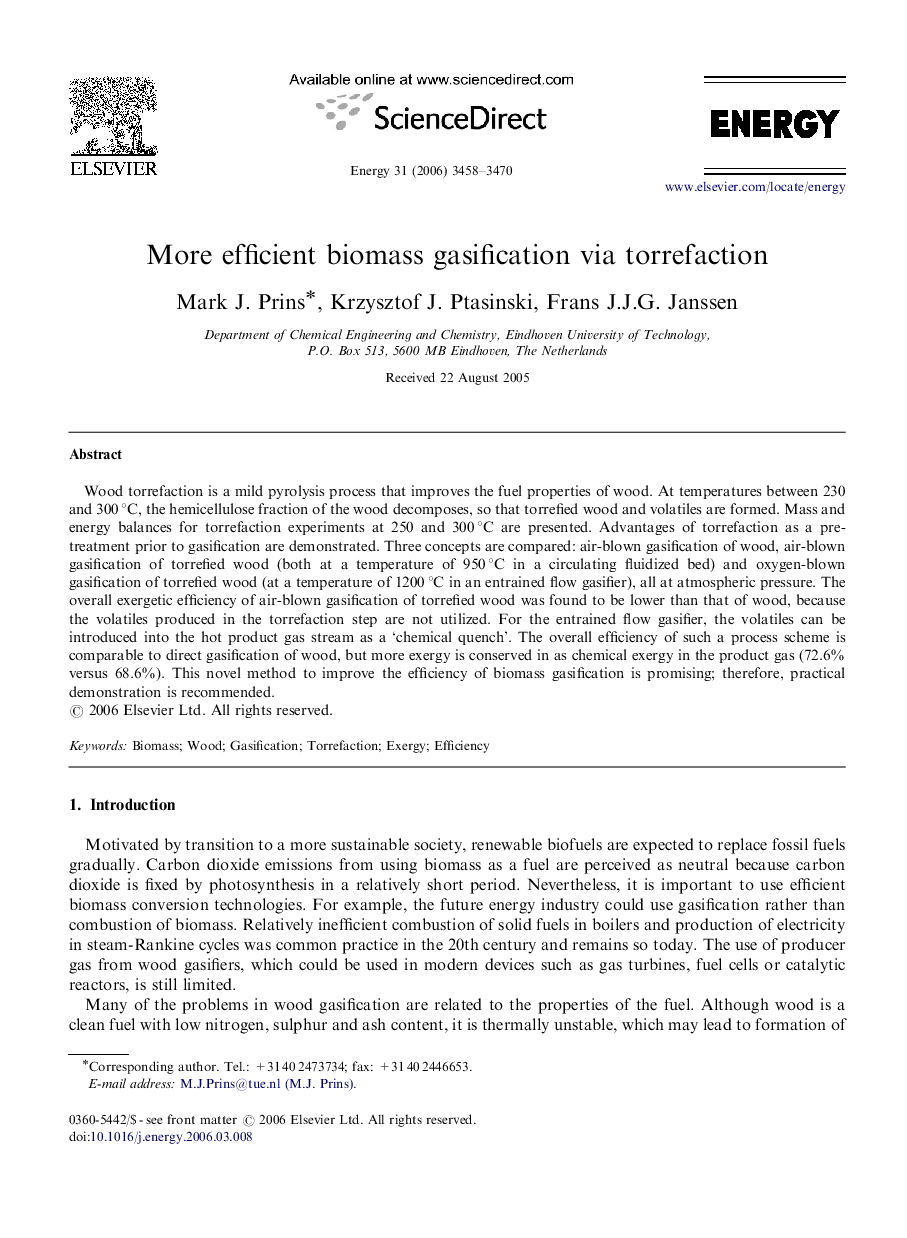| Article ID | Journal | Published Year | Pages | File Type |
|---|---|---|---|---|
| 1736114 | Energy | 2006 | 13 Pages |
Wood torrefaction is a mild pyrolysis process that improves the fuel properties of wood. At temperatures between 230 and 300 °C, the hemicellulose fraction of the wood decomposes, so that torrefied wood and volatiles are formed. Mass and energy balances for torrefaction experiments at 250 and 300 °C are presented. Advantages of torrefaction as a pre-treatment prior to gasification are demonstrated. Three concepts are compared: air-blown gasification of wood, air-blown gasification of torrefied wood (both at a temperature of 950 °C in a circulating fluidized bed) and oxygen-blown gasification of torrefied wood (at a temperature of 1200 °C in an entrained flow gasifier), all at atmospheric pressure. The overall exergetic efficiency of air-blown gasification of torrefied wood was found to be lower than that of wood, because the volatiles produced in the torrefaction step are not utilized. For the entrained flow gasifier, the volatiles can be introduced into the hot product gas stream as a ‘chemical quench’. The overall efficiency of such a process scheme is comparable to direct gasification of wood, but more exergy is conserved in as chemical exergy in the product gas (72.6% versus 68.6%). This novel method to improve the efficiency of biomass gasification is promising; therefore, practical demonstration is recommended.
